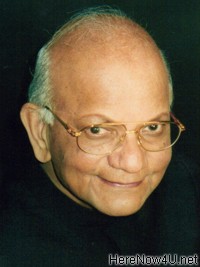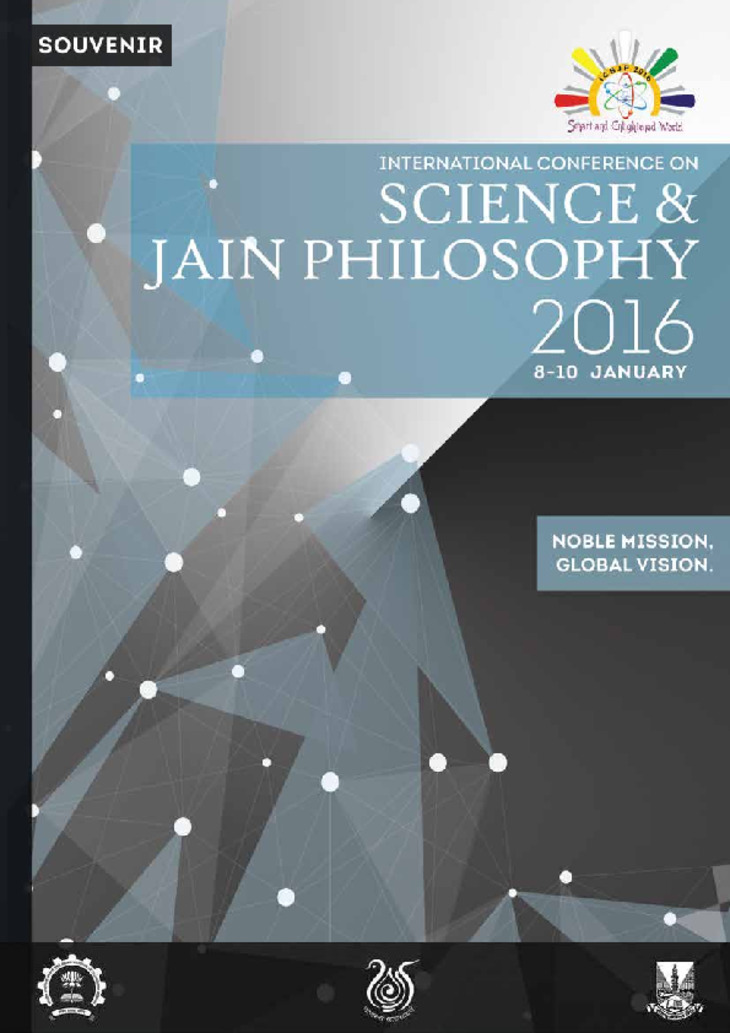
International Conference on Science and Jain Philosophy
 The winner of Jain Ratna award by PM in 2001 and HM Queen and Civic award by Barnet Council - Dr Natubhai Shah is responsible for creation of Jain Centres in Leicester, London, the University of Mumbai.
The winner of Jain Ratna award by PM in 2001 and HM Queen and Civic award by Barnet Council - Dr Natubhai Shah is responsible for creation of Jain Centres in Leicester, London, the University of Mumbai.
Modern science and technology have brought high standards of material comfort and welfare to people, particularly in the 'developed' countries. However, these material gains have not brought satisfaction or contentment. On the contrary, they seem to have created more greed, conflict, insecurity, unhappiness, anxiety, stress and illness. In the face of the failure of wealth and material comforts to deliver contentment, many are turning to yoga and meditation, an age-old Indian tradition, to regain their physical and mental health.
Yoga is a spiritual activity of mind, body, or speech aimed at achieving spiritual liberation or self-realisation. The Tattvartha Sutra defines meditation (dhyaana) as concentration on a particular object, Jain scriptures describe four forms of meditation: 'sorrowful' (aarta) 'cruel' (raudra), 'virtuous' (dharma), and 'pure' (sukla). The first two are inauspicious, to be avoided and the last two auspicious ones are worth observing.
Auspicious meditation helps to promote both physical and spiritual health. For the benefit of the Jain Community, Jain Seers have interwoven the virtuous meditation into their daily activities. Rare persons are capable to practise pure meditation.
The living organism consists of the physical body: material constituents such as the sensory organs, brain, mind, sub-conscious mind (chitta), subtle luminous body, more subtle karmic body, and non-material conscious element: the soul. Jainism believes the universe consists of six substances; 'non-material thing the soul and five 'material' things: the matter, medium of motion, medium of rest, space and time. It emphasises the knowledge of these six substances (sad dravyas) or Realities necessary to progress towards the path of spiritual liberation.
Substances change their forms (paryaayas), states or modifications, but basically they are permanent and unchangeable. They can combine together without losing their separate identities or natures. Substances are endowed with 'coming into existence' (utpaada), when they change their forms, decay or 'cease to exist' (uyaya), and permanence or 'continuous existence' (dhrauvya). All six substances are continuously active. To be active, the substance has to undergo modifications at every moment. It has to have a new mode, simultaneous disappearance of the old mode and at the same time permanency. These phenomena happens at every moment by the inherent, momentary, imperceptible and continuous wave motion found in the constituents of the substance itself, similar to the waves of the ocean.
There are two forms of stationary wave motion: common stationary wave motion found in all the substances: existence, function ability, knowability, individuality, spatiality and special stationary wave motion with a process of integration and disintegration, found only in the soul and in matter.
The pure soul and pure matter have special attributes(guna). Special attributes of the soul are: infinite faith, knowledge, bliss and energy; perfect conduct, eternality, non-materiality and the absence of lightness or heaviness. The special stationary wave motion of the soul provides it with consciousness, which remains invisible. Special attributes of matter are: touch, taste, colour and smell. The special stationary wave motion of matter provides it with sensibility, which makes it visible.
Stationary wave motion cycles occur in the substance countless times per moment, the y establish vibrations in the parts (pradesas or paramaanus) of the substance, and cause disturbance when combined with other substance to produce differing modes. The modes are termed dravyavyanjanaparyaaya. The disturbance-carrying energy waves precipitate the attribute (guna) of the substance.
In all omniscient souls (embodied or disembodied) these two types of dravya and gunavyanjanaparyaaya function normally, as such pure souls are free from obscuring karma. They function abnormally in all worldly souls because of their karmic bondage. Likewise they function normally in elementary particles of matter and abnormally in all elementary particles within the molecules.
From the onset the relationship between soul and matter has been responsible for worldly existence. Apart from the gross organic body there is a subtle body which serves as a link between the soul and the material body, and which is only discarded at liberation. The disintegrating matter particles of this subtle body are replenished in a continuous succession, and thus the subtle body remains intact. It is the subtle body, which includes the karmic body that keeps the soul in worldly cycles.
The soul itself, a conscious entity, forms the nucleus of the organism. A contaminating field producing malevolence (the passions), derived from the karmic body, envelops it; this field not only circumscribes but also governs psychic activity. Transcendentally, the soul is the supreme 'ruler* but, in actuality, the influence of the passions is so powerful that the ruler is unable to act independently. The soul radiates pure psychic energy, but as the radiations have to pass through the domain of the karmic body and passions, they get distorted. During their passage, they interact with the passions and form a new field; in Jain scriptures this is the 'domain of the primal drive' (adhyavasaaya) i.e. the primal psychic expression. While the mental states due to cerebral activity are found only in vertebrates; the primal drive is present in every living organism including plants. Further, the radiation intermingles with the other subtle bodies, luminous and karmic, and the consequences are biochemical and bioelectrical.
The radiations of urges and impulses moue between the subtle body and the gross body. These compelling drives, derived from the subtle body, activate the endocrine system when they reach the physical body, stimulating the latter to secrete and distribute chemical messengers (hormones) corresponding to the nature and intensity of the impulse. These hormones become the agents for executing the primal drives in the physical body.
The chemical messengers secreted by the endocrine glands are carried by the bloodstream and interact with the brain and the nervous system; together they constitute an integral co-ordinating system, which modern medicine calls the neuro-endocrine system. The primal drives depend upon the karmic components and create the psychic mind with appropriate knowledge and perception to radiate image across the field of liaison between the subtle and the gross bodies. The physical mind acts as a vehicle for the flow of emotions, which stimulates the endocrine and nervous systems, creating thought, speech and bodily activities.
How meditation works
Relaxation and bodily detachment are the prerequisites of meditation. The first signs that one is benefiting from virtuous meditation are control over the senses, fine health, kindness, an auspicious aura, bliss and clarity of voice. It leads directly to heavenly pleasures and indirectly to liberation through merit, stopping the influx of karma and the shedding of previously acquired karma.
Through its continuous vibrations, the pure soul radiates its characteristics: infinite bliss, knowledge, perception and energy. The vibrations that have to pass through the cloud of karmic body become distorted and produce malevolent field of passions and primal drives. Although this distorted radiation shed karmic particles through its natural characteristic of disintegration, it not only influences the activities of the gross body, mind and speech, but also is influenced by the process of integration of karmic particles attracted by the external environment and the passions generated by the shaded karmic particles. When all bodily activities are halted through bodily detachment and meditation, the distorted radiation of karmic body becomes ineffective. As a result one experiences mental equilibrium and blissfulness. As it is ineffective, the karmic body continues transmitting vibrations with greater speed, resulting in shedding of more karmic particles and the process of disintegration or shedding karmic particles carries on till all karmic particles are shed..
When one gets rid of karmic body, spiritual liberation of the soul is attained to manifest its true characteristics. Thus the meditation aids the soul in shedding the karmic body and achieving self-realisation and also in early stages to promote both physical and spiritual health.
Meditational practices and their beneficial effects have been well known in India for thousands of years. Recently these practices have become widely popular in the West. In India many institutions employ meditation to assist the cure of illnesses and work to establish the scientific basis of meditation.
 Dr. Natubhai Shah
Dr. Natubhai Shah
